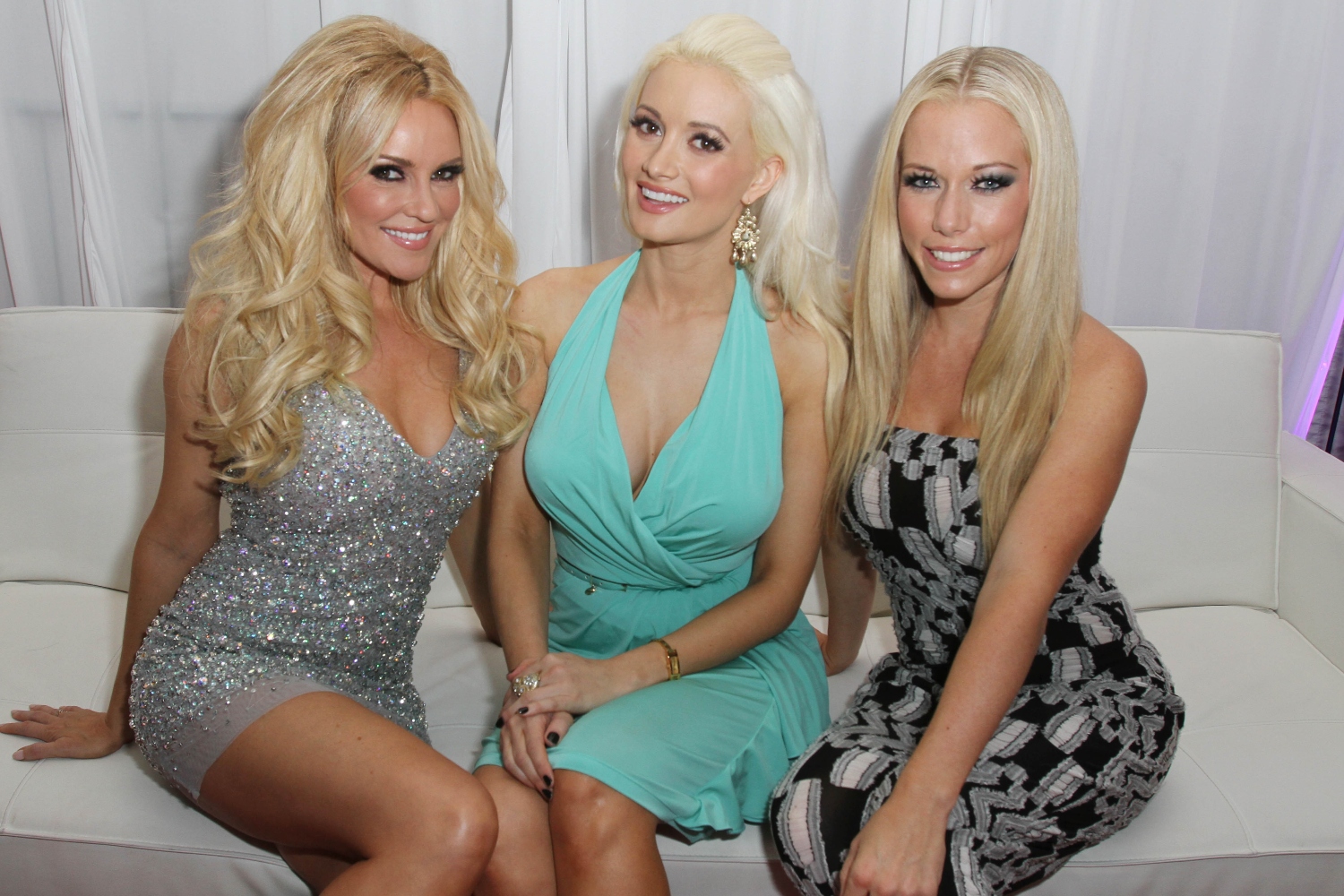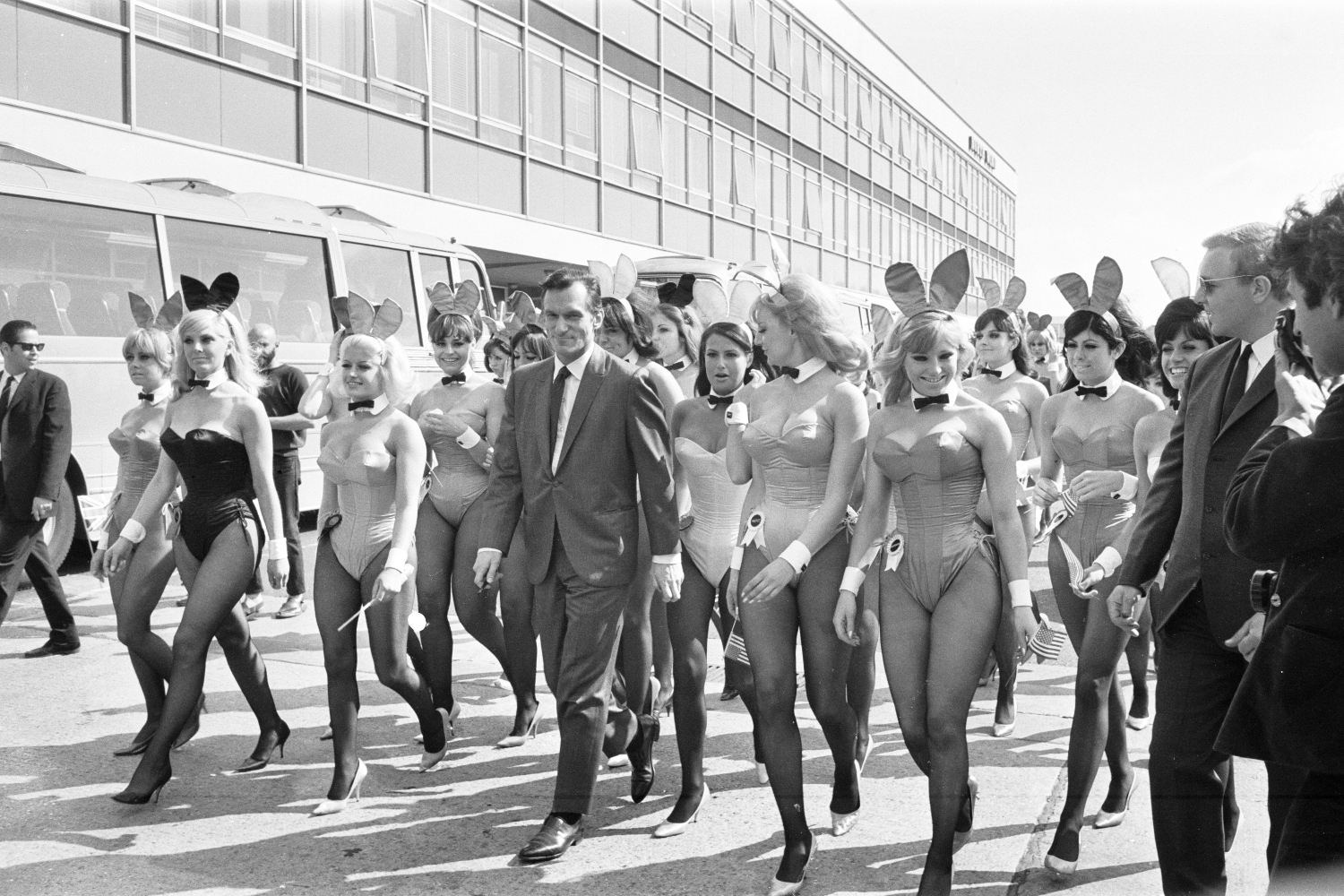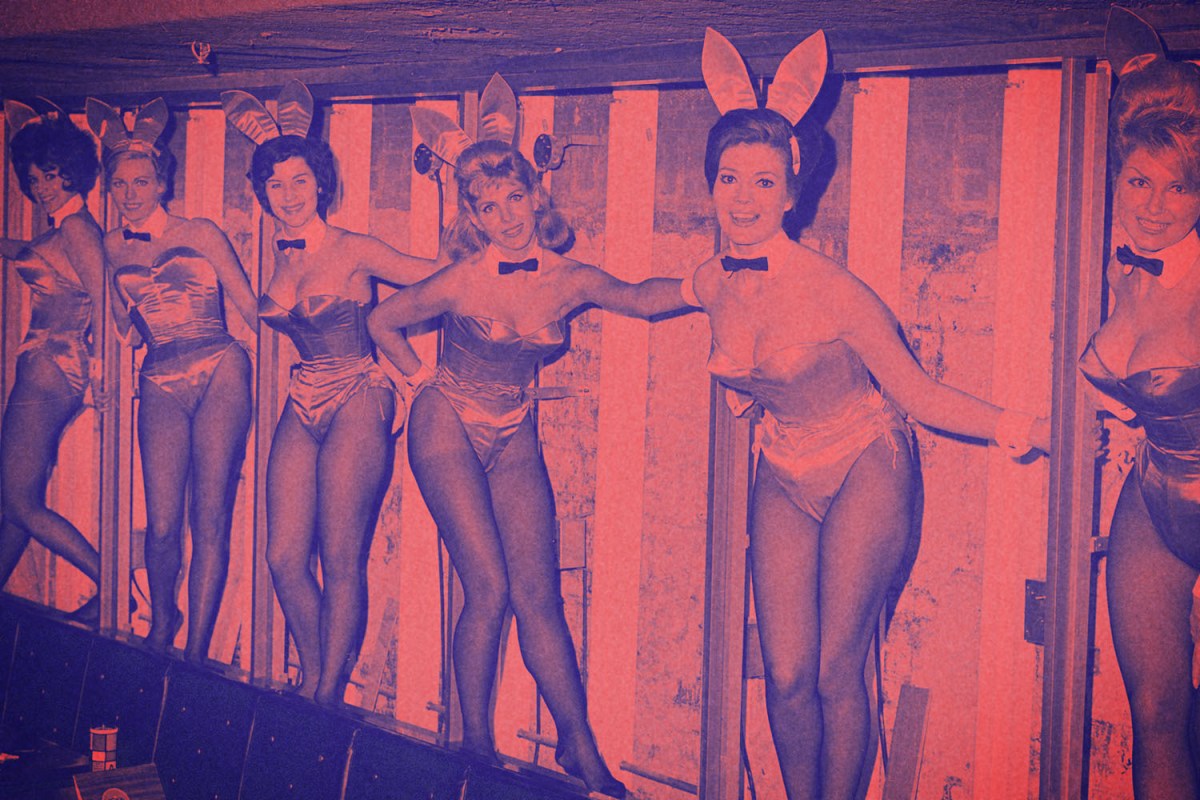In 2008, when Anna Faris starred in a romantic comedy about a Playboy model who is kicked out of the mansion after turning 27, I was 11 years old. The House Bunny was, to my recollection, my first real exposure to Playboy. I was vaguely aware of it before then, of course. After all, Playboy is often hailed as the original lifestyle brand, and the rabbit head emblem, according to Playboy anyway, is one of the most recognizable brand logos in the world. But this was the first time it had ever occurred to me that Playboy was something I should care about, personally. At 11, I was perhaps a bit younger than The House Bunny’s target audience as a PG-13 movie, but it was the first time I’d ever seen Playboy advertised as something that was for young women, rather than the men leering at them. At that point in my life, as a newly minted preteen, I was just beginning to understand about sex. More crucially, I was just beginning to understand about being sexy, and just how important a thing that was for a woman to be.
I quickly became obsessed with all things Playboy, and, like many girls growing up in the 2000s, I idolized the women at its forefront. At that time, the women of Playboy were most prominently represented by Hugh Hefner’s trio of busty blonde girlfriends, Holly Madison, Bridget Marquardt and Kendra Wilkinson. They were the stars of the E! reality series The Girls Next Door from 2005 until 2009, a lighthearted TV show that brought a toned-down, cable TV friendly version of Playboy to an unprecedentedly young, female audience.
At that time, I didn’t know what a “girl next door” was, but I assumed it was a sex thing. After all, these gorgeous bleach blondes who stripped down for nude magazine shoots seemed, to me at least, to be the most obvious, enviable sex symbols in the world. (A 2004 film called The Girl Next Door that I inevitably sniffed out, about a high school senior who falls in love with a former porn star, seemed only to confirm this narrative.) While I never aspired to the blonde bombshell look specifically, these women — thin, scantily clad and beautiful — embodied the kind of power by way of sexuality I hoped to one day wield. I studied their back stories religiously and plotted my plan to become beautiful and desired. Holly had gotten breast implants at 18, been a Hooters girl and was a Hawaiian Tropic model when she was invited to her first Playboy mansion party. That seemed like a navigable roadmap. Kendra had been a stripper; maybe I could learn to dance. Bridget had always dreamed of being in Playboy and idolized the women in its pages over stolen perusals of her father’s stash of magazines as a child. Clearly I was on the right track.

It was, then, rather confusing to learn that the girl next door archetype was traditionally defined by qualities that seemed to directly contradict the unapologetic sexuality I so admired in the women of Playboy. The girl next door, apparently, was supposed to be demure, down-to-earth, wholesome. She was pretty, beautiful even, but she probably didn’t know it and would never use it to her advantage on purpose. She wasn’t like the other girls — and you know exactly which ones I’m talking about. Even if she wasn’t quite a virgin, she certainly wasn’t a “slut.” She was girlfriend material, the kind of woman men were supposed to want to settle down with after a few misfires with the wrong kind of girl.
It didn’t quite make sense to me how, exactly, Hugh Hefner’s living sex symbols were supposed to also be the girls next door. But, of course, that was back before I understood the impossibly thin line women are forced to walk between purity and sexuality, innocence and experience, madonna and whore. Back before I understood the double-edged sword that is female sexuality, the inherent contradiction we are forced to navigate from birth. From a young age we are made to understand that if we want to succeed in any capacity, we’d better be beautiful, and we’d better hope men want to have sex with us. We are made to believe that our sexuality — largely quantified by our youth and beauty — is our primary strength, our greatest source of power, but also that we should exercise it very cautiously, if at all.
I may not have understood all of this, but Hugh Hefner did, and he built an empire on it.
Creating the girl next door
Playboy has been no stranger to controversy from all sides since Hugh Hefner printed nude photos of Marilyn Monroe (without her consent) in the first issue of the magazine in 1953. Conservative backlash to Hefner and his brand has always been pretty straightforward. This man was putting photos of naked women in his sex magazine; that’s sure to piss off the conservatives and religious types for the obvious reasons.
On the progressive side however, the feminist argument for or against Playboy has always, over the course of several waves of feminism, rested more or less on one key debate: is Playboy liberating these women or exploiting them? Clearly there’s no easy answer, considering we’ve been asking this question for nearly 70 years.
Hugh Hefner certainly saw himself — or at least presented himself — as a sexual liberator. Hefner and his “Playboy Philosophy” famously advanced a progressive ethos, arguing for civil rights and sexual freedom. At the dawn of the sexual revolution, Hefner famously made it okay for “nice girls” to like sex, too. Aside from Marilyn (and the other stars that eventually appeared in the magazine’s annual celebrity centerfold), the women Hefner featured in his magazine were typically “regular” girls. They weren’t professional models, and they certainly weren’t “professionals” in any more nefarious sense. These women, according to Playboy, anyway, were just regular, all-American girls who just so happened to be gorgeous, naked and to love sex. She might be your friend, neighbor, coworker or classmate — a woman you would encounter in your everyday life who, as it turns out, may just want to have casual sex with you. She was the girl next door.
Ahead of the sexual revolution, this notion that ordinary women could and did enjoy sex outside of marriage was indeed groundbreaking, and it is admittedly hard to argue that Playboy’s early influence didn’t play any role in the sexual liberation of women. But Hefner, of course, wasn’t simply a devoted male feminist. If the girl next door ideal that became so integral to the Playboy image was liberating for women (or at least some women), it was also good for the brand.
“For Hefner, it was certainly a way to balance his investments in a sexualized, performative femininity amid a period of social change against his critics,” says Moya Luckett, a media historian and professor of the Gallatin School of Individualized Study at New York University. “More importantly, it recast the girl next door as essentially a sexual agent, making her more ubiquitous and thus more available to his swinging bachelor lifestyle/philosophy. If the girl next door is readily available to pose topless and enjoy a free sexual lifestyle with few strings attached, then Hefner is liberatory and nobody is being exploited, fitting in with the utopian consumerist and forward-looking ‘philosophy’ he expounded in his magazine and throughout his brand.”
While Playboy’s girl next door ideal may have been (or seemed) liberating in some regards, it also had a way of taking that newly liberated female sexuality and putting it back into a more palatable frame of patriarchal domesticity. These women may have been sexual, but they weren’t a threat: they weren’t trying to take your money or otherwise exercise their sexuality over you as a form of power. These were just nice girls, the kinds you probably encountered every day at the office, in class or on your way to work, who just so happened to love sex and would probably fuck you.
This was also, as Luckett says, “a way of sexualizing all young and attractive women, but largely in terms of male fantasies.” Again, the Playboy Playmate was an everygirl. Thus, says Luckett, “Even women who don’t appear in the magazines can be interpreted as classy, artistic, kind and fun, yet underneath it all hyper-sexual and potentially available.”
Controlling the girl next door
While Hefner’s image of the girl next door may have made it okay for “nice girls” to like sex, it didn’t do anything to dispel the notion that there were, in fact, good girls and bad ones. If anything, it only revised and reinforced the madonna-whore binary from which it purported to liberate women. Hefner, whose attempts to exclude sex workers from the Playboy brand are well documented, may have made it okay for the madonna to like sex, but not for the whore to be a nice girl.
The image of the Playmate as the girl next door, says Luckett, “renders these girls ‘nice’ and ‘clean,’ which is important for male sexual health and removes any guilt involved in these associations.” Crucially, she adds, “The girls are not seductresses or prostitutes or loose women, but [are] following their own healthy sexual desires and enjoying their natural bodies.”
Ultimately, what the girl next door was — beautiful, sweet, “classy” but mostly nude — was just as important as what she wasn’t: namely, a sex worker. The pristine, sexy-but-not-debauched image of the girl next door applied to all women associated with the Playboy brand, whether Playmates, models, Playboy Bunnies (an oft-misused term that actually refers exclusively to the women who waitressed at the Playboy clubs) or girlfriends that lived with Hefner at the mansion.

In her 2015 memoir, Down the Rabbit Hole, Hefner’s former girlfriend and Girls Next Door star Holly Madison recalls trouble in the mansion after one of Hefner’s then seven girlfriends started recruiting women for an escorting service. Even for Madison, who has repeatedly stated that she does not identify as a sex worker and resents having her time at Playboy compared to work in the sex industry, Hefner’s attempt to keep sex work away from the Playboy brand felt hypocritical.
“The hypocrisy here is palpable,” writes Madison. “Considering Hef kept his own ‘harem’ of sorts, it’s easy to see the mansion as a gateway to hooking. But Hef was determined to plug this leak — not necessarily for the benefit of the girls, I believe, but to maintain Playboy’s image. It wouldn’t look that good if a majority of Playmates graduated to sex for pay. Playboy was supposed to be ‘classy,’ after all.”
Indeed, Playboy’s girl next door image is also plagued by undertones of classism. The girl next door is a figment of middle class Americana wet dreams. In addition to not being a hooker, she lives in your subdivision, she goes to your college, and if she happens to be in Playboy, she’s showing just enough skin, but not too much.
Perhaps, at some point, Playboy’s version of the girl next door became ironic, even for Hefner. In the ’90s, Playmates like Pamela Anderson, Anna Nicole Smith and Jenny McCarthy began to achieve an unprecedented level of stardom that it made it hard to believe in the untouched, born-yesterday image of Playmates of yore, and the bleach-blonde, obviously cosmetically enhanced aesthetic they ushered in certainly didn’t say “girl next door.”
Still, Hefner’s attempts to keep sex workers out of the brand were well documented, even towards the end of his reign. Kendra Wilkinson, one of the three stars of The Girls Next Door, was reportedly encouraged to lie to Hefner about her past as stripper, saying instead that she was a college student.
This illusion of “class” is one Playboy maintained for decades, initially as a defense against conservative backlash, and later in an attempt to distinguish itself from the racier copycats that popped up in the wake of Playboy’s success. Sure, Penthouse and Hustler may have shown more skin, but Playboy had class.
Of course, Playboy’s precious pretense of “class” was only ever a product of the impossible contradiction of sexiness and purity to which it forced its women to conform, a cocktail of whorephobia and exploitation.
Exploiting the Girl Next Door
The other crucial thing about the girl next door — which I have as yet neglected to mention because it feels so painfully obvious — is that she is young.
As a young woman who has spent the vast majority of my young womanhood dating significantly older men, I have often argued against the kneejerk condemnation of age-gap relationships as inherently exploitative.
But Hefner’s vision of the girl next door is rooted not only in youth and beauty, but in a certain degree of innocence and vulnerability. (Whether or not one can ever truly separate the fetishization of innocence and vulnerability from that of youth is a question to which I have no clear answer, but have explored at length elsewhere.) It was this innocence, more than the youth or beauty, that Hefner and Playboy seemed intent on exploiting.
The 2022 A&E docuseries Secrets of Playboy features a variety of interviews with women who witnessed or were forced to conform to Playboy’s girl next door ideal first-hand.
According to Sondra Theodore, a former girlfriend of Hefner’s in the late ’70s and early ’80s, the appeal of the girl next door, for the Playboy founder, was all in tearing her down.
“He would tell the public, ‘Even good girls enjoy sex, healthy sex.’ There was nothing healthy about the sex with Hefner, because he took it too far,” says Theodore in the series, in which she reveals that sex with Hefner invovled all manner of debauchery, including sex with animals. “He was taking the girl next door, and he was soiling her.” (It is perhaps worth noting that Theodore was a 19-year-old Sunday school teacher when she met Hefner, then 50.)
For the men of Playboy’s inner circle, the whole point of the girl next door — her youth, her fresh-faced innocence, her inexperience — seems to have been corrupting that innocence.
“I think for men like Hef, over time it takes more to be turned on,” Jennifer Saginor, the daughter of Hefner’s longtime friend and doctor and author of the memoir, Playground: A Childhood Lost Inside the Playboy Mansion, says in the docuseries. “That rush came from finding these girls that were very innocent and naive and slowly watching them do things they never thought they would do before. Really just breaking them down.”
That’s how it works, according to Saginor, “Even for someone like Anna Nicole Smith. They’re used for a certain period of time. They are then easily disposable. I believe that there was something exciting in meeting these young girls that would come from small towns that still kind of had that light in them and watching them slowly burn that light out.”
Playboy’s girl next door was built to be destroyed. Bunnies, after all, are prey animals.
The Charge will help you move better, think clearer and stay in the game longer. Subscribe to our wellness newsletter today.



























